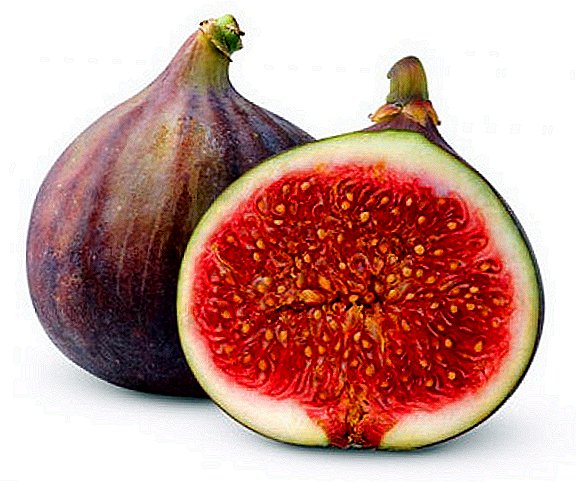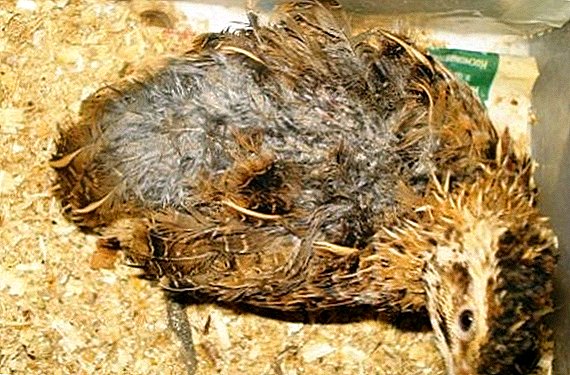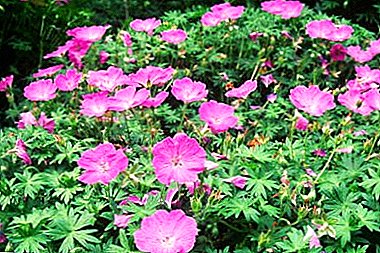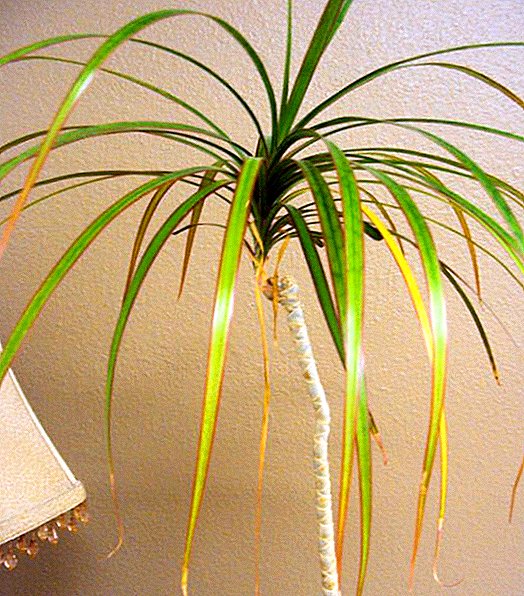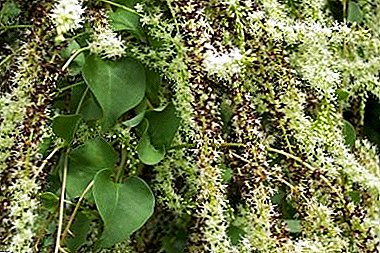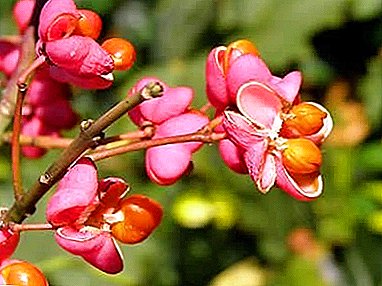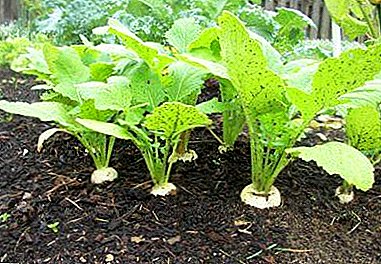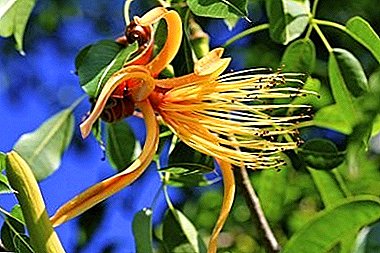
Often in the flower shop you can find a plant, the trunk of which is braided following the example of a girlish braid.
This is Pahira, which in most cases is represented by the view Aquatica, or Pachira Water.
Introduction
The tropical part of this extraordinarily beautiful plant is the birthplace of this plant. Central and South America. Pahira because of its characteristic stem called bottle tree, and it belongs to the baobab family.
Evergreen smooth leaves grow on long petioles, and flowering begins in June and ends in November, but with changing conditions, the time of occurrence of this phase can shift. Large flowers have a vanilla smell and are collected in the inflorescence - a panicle.
A photo
Visually review the flower Pahira Aquatika you can a photo below.





Home care
Pahira Aquatika requires strict care at home.
How to care for Pachira at home, so that the Pachira Aquatica houseplant retains its appeal after the purchase, you need to follow a few simple rules of care.
Temperature
For Pakhira, the temperature is considered best during the spring and summer season. from 20 to 25 ° С, in winter - about 15 ° С.
In such conditions, the barrel will not be stretched. At the same time, the pots with the plant should not be placed near the radiators of the heating system and watch for the absence of drafts from which it falls ill.
Watering
The mode of watering in the warm season is maintained moderate. For this, the soil in the upper layer of the pot should dry out. From mid-autumn to February, watering should be infrequent, while not allowing the formation of a dried earthy coma. With a lack of moisture, the leaves react by lowering the turgor, but when it is abundant, the stem may rot. Watering is carried out with warm softened water on the outer edge of the pot without contact with the base of the barrel, or in the pan.
Transfer
Young Pakhira transplanted once a year in springadult needs it once in 3 years. A shallow, but relatively wide, pot is selected for transplanting - more than the previous one by 5 cm. The roots of the plant lie shallow, and the stem is not buried during transplantation, as this causes rot.
Breeding

For the plant used 2 methods of reproduction:
- Cuttings, held in late August. For this, the stalk must be cut off from the heel.
Rooting takes place in heat and high humidity..
- Seeds, spend early spring. Seed material should not be stored for a long time, as over time its germination decreases.
To do this, the seeds are scattered in a wide bowl, almost without covering the ground, and sprayed with warm water.
Next, cover with film or glass, from time to time opening for ventilation and removal of moisture droplets.
With a recommended soil temperature of about 26 ° C, ascending appears after 3 weeks.
Lighting
Plant required intense lightingotherwise, the stem will stretch and decorativeness will be lost. A certain amount of direct light is allowed, but it is better if it is scattered. Pachira grows well from the west or east side, but from the south it will be needed during the daytime sun.
In the summer, the plant pot is placed in the garden in a place protected from rain, wind and direct sun. With a small number of bright days in autumn and winter, with the beginning of spring, Pakhira is taught to more intense lighting to avoid sunburn, as direct exposure to sunlight causes damage to plants that are not used to it.
Priming
The substrate for planting is prepared by mixing in equal proportions of sheet and sod soil with sand. At the bottom the drainage is necessarily arrangedTo which it is desirable to add a crumb of red brick and charcoal, capable of taking excess moisture from the soil. Use of ready mixes for palm trees and dratsen is allowed.
IMPORTANT! The plant does not like too nutritious soil, and does not need frequent feeding. But it needs a loose substrate with low acidity.
Pruning

The ratio of the height and diameter of the stem of a plant is formed due to the influence of external conditions.
Abundant watering and lack of light pull the trunk, making Pakhira look like a simple thin-bore tree.
Pruning the crown in the spring, removing the stretching up the branches. Branching occurs at the cut point, making the crown more dense.
As a rule, the purpose of pruning is to give the plant the shape of an oval or ball.
The height of the tree is regulated by pinching the top, it also stimulates the appearance of side branches. The size of the shoots is reduced by the lowest possible pruning before a period of intensive growth.
As a result, active branching begins, the crown thickens and takes on a magnificent appearance. The trunk Pakhira sometimes form into a pigtail, placing several plants in a pot and weaving them together as they grow, removing the bottom leaf.
ATTENTION! Forming a plant of a certain shape, it is important not to damage the crown with too tight tightening with the help of twine. To fix the braid, it is enough to fix it loosely, with the passage of time the trunks will become thicker, and the form will hold on without assistance.
Plant benefits
In the conditions of the house, the cultivation of Pakhira Aquatika is carried out only with a decorative purpose; bonsai can also be made from it. In their homeland in the Americas, the fruits of the tree are used as food in raw, boiled and fried form, they grind flour and bake bread, make a drink. Edible, not only fruits, but flowers and leaves.
Diseases and pests
The main pests of Pakhira are shield and spider mite. Infection often occurs when nick humidity. The plant is periodically examined, and when pests are detected, it is processed by Aktar or another means 2-3 times with an interval of 7 days.
When growing plants can face the following difficulties:
- Pachira leaves turn yellow. This indicates problems with the root system, the cause of which may be too deep planting, lack of nutrients in the soil, rotting due to waterlogging or damage by pests.
- Leaves curledforming soft brown edges. This occurs at a low temperature or a large night / day temperature drop;
- Withering branches with leaves. This effect can give both insufficient and excessive watering. When wetting dry soil or drying after abundant watering leaves return to normal.
Conclusion

It takes more than one year for a young sapling to become a tall tree.
To do this, you need to be patient, carefully following all the rules of care.
After a while, Pakhira will be the decoration of the home and a source of pride, becoming the object of close attention of friends and acquaintances.


